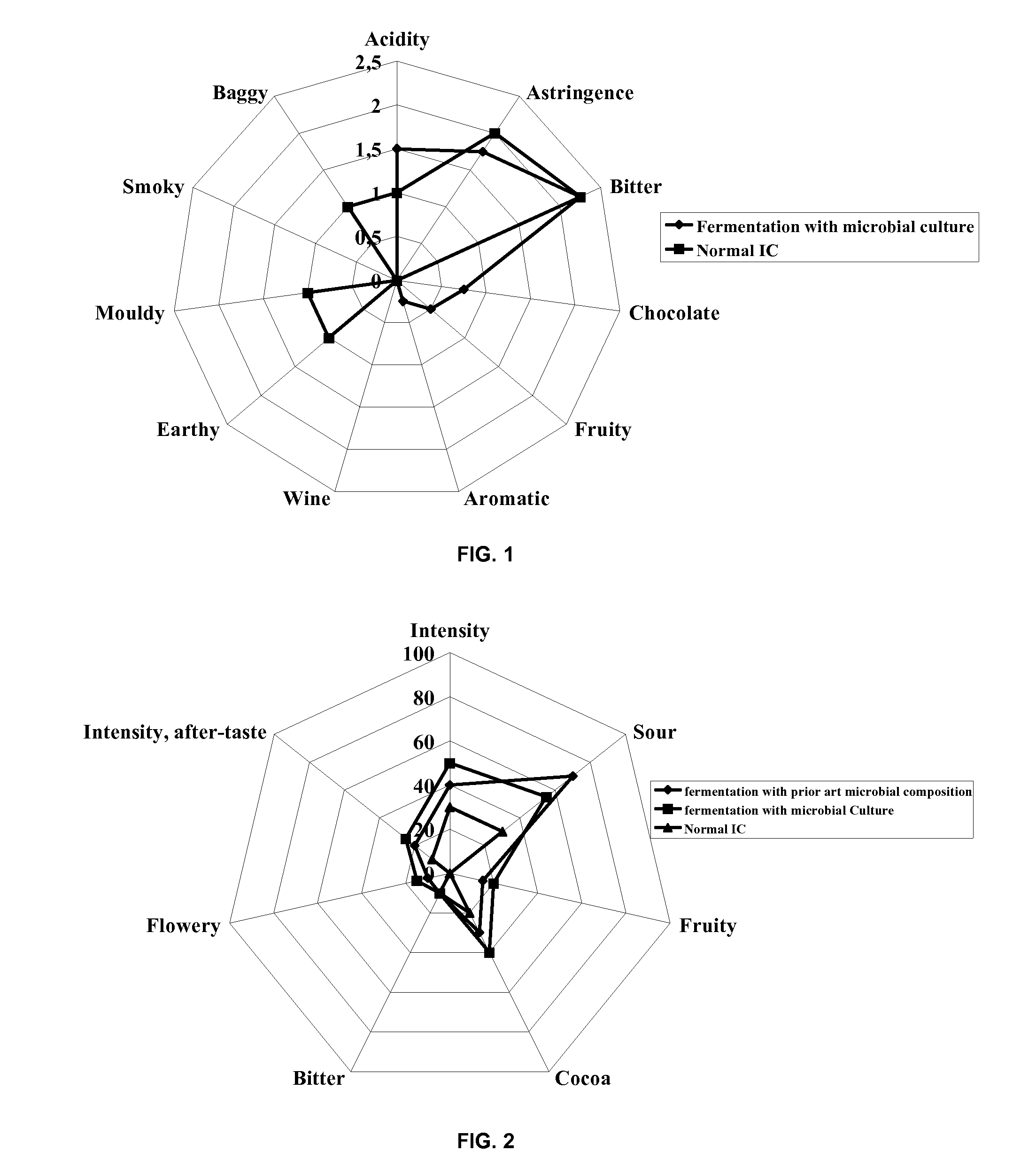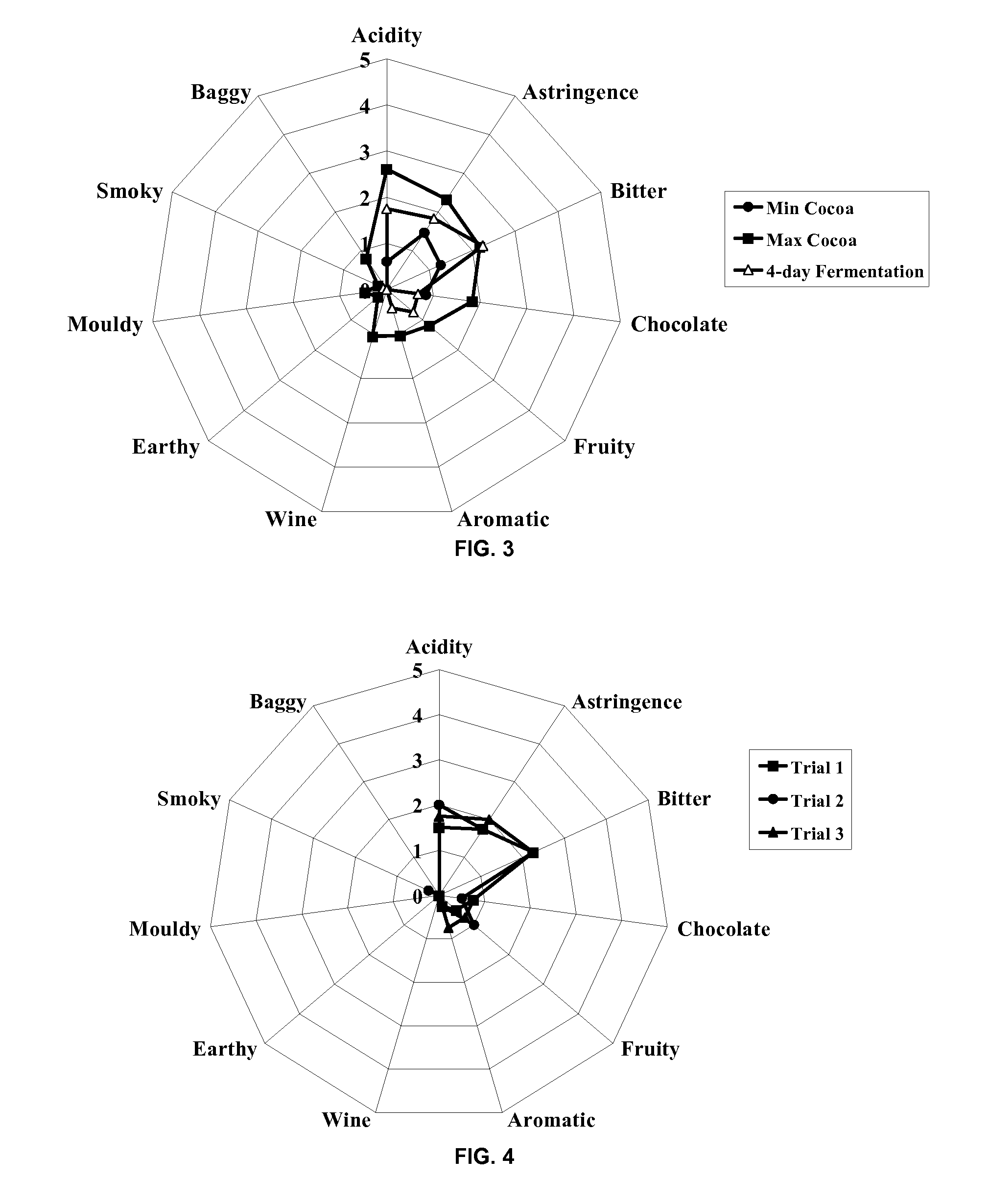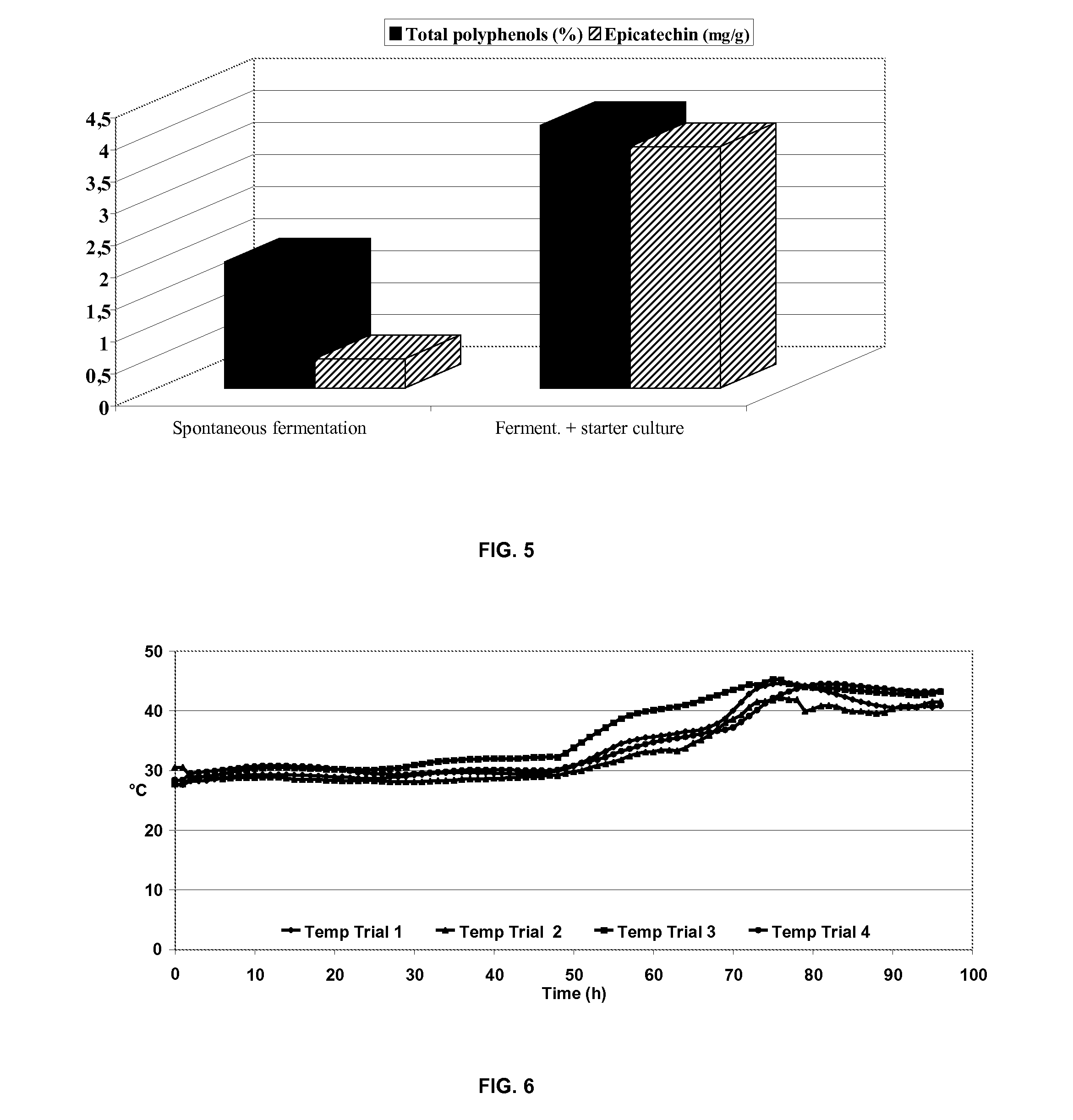Microbial composition for the fermentation of cocoa material
a technology of microbial composition and cocoa, which is applied in the field of microbial composition for the fermentation of cocoa material, can solve the problems of death of the seed embryo, inhomogeneous spontaneous cocoa fermentation process, and large variation in both microbial counts and species composition, so as to improve the efficiency of processing the bean or product, improve the efficiency of micronization, winnowing, mixing
- Summary
- Abstract
- Description
- Claims
- Application Information
AI Technical Summary
Benefits of technology
Problems solved by technology
Method used
Image
Examples
example 1
Use of a Microbial Composition According to the Invention to Ferment Cocoa Beans
[0290]This example illustrates a method for fermenting cocoa beans using a microbial composition according to the invention as compared to a natural fermentation method. The microbial composition according to the invention used in this experiment comprised the following bacterial strains: Lactobacillus plantarum, Lactobacillus fermentum, Acetobacter pasteurianus Lactobacillus parafarraginis, and the yeast Saccharomyces cerevisiae.
[0291]For the beans fermented with a microbial composition according to the invention, unfermented Ivory Coast beans (e.g. 100 kg) were mixed with 100 ml microbial composition and after 2 days, turned and allowed to ferment for another 2 days. Other experimental conditions applied in the experiment are represented in table 3.
TABLE 3experimental conditionsFermentationConventionalFermentation using a priorusing a starter culturefermentationart starter cultureaccording to the inve...
example 2
Taste Experiments on Cocoa Beans
[0299]The beans that were fermented using a microbial composition according to the invention and the conventionally fermented beans as described in example 1 were subjected to taste analyses.
[0300]The beans prepared as described in Table 3 above, were then dried by evaporation of the water under vacuum during gentle heating, at a temperature below 60° C., until the moisture content was less than 10%. Then the beans were roasted in an oven at 120° C. for 30 min. The flavours generated by the roasting were then evaluated by a panel of at least 5 individuals used to evaluating such flavours. Scores were assessed on a point system from 0 to 5. A high score in a category indicated a strong intensity of a particular flavour. Each sample was evaluated for the following sensations: “acidity”; “astringency”; “bitterness”; “chocolate”; “fruity”; “Aromatic”; “wine”, “earthy”; “mouldy”; “smoky”; “baggy” (i.e. off flavours). Table 5 and FIG. 1 show the results of ...
example 3
Taste Experiments on Chocolate
[0302]The beans described in example 1 were used to prepare chocolate. The obtained chocolate contained 52% of cocoa solids and was subjected to a taste panel of at least 5 individuals which assessed the obtained chocolate on a scale from 0 to 100 for the following sensations: “intensity”; “bitterness”; “cocoa flavour”; “fruity”; “sour”; “flowery”; “intensity of aftertaste”. FIG. 2 shows the results of this taste experiment.
[0303]As can also been derived from FIG. 2 and as was reported by the taste panel, chocolate prepared with beans that were fermented using a microbial composition according to the invention had a very homogeneous taste and no perceivable off-flavours, and had improved fruity and flowery taste.
[0304]In contrast thereto, chocolate prepared with the conventionally fermented beans or with the beans fermented with the indicated microbial composition tasted less fruity and less flowery. Also, the chocolate prepared with the beans fermented...
PUM
 Login to View More
Login to View More Abstract
Description
Claims
Application Information
 Login to View More
Login to View More - R&D
- Intellectual Property
- Life Sciences
- Materials
- Tech Scout
- Unparalleled Data Quality
- Higher Quality Content
- 60% Fewer Hallucinations
Browse by: Latest US Patents, China's latest patents, Technical Efficacy Thesaurus, Application Domain, Technology Topic, Popular Technical Reports.
© 2025 PatSnap. All rights reserved.Legal|Privacy policy|Modern Slavery Act Transparency Statement|Sitemap|About US| Contact US: help@patsnap.com



